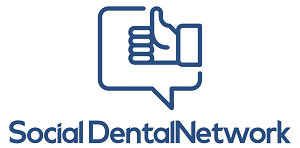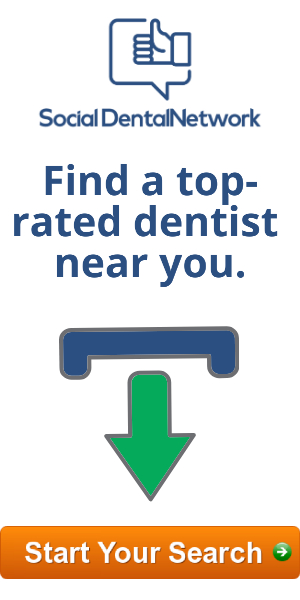Aside from Halloween, October also brings us one of two other dental-centric occasions to help raise awareness for optimal oral health – National Dental Hygiene Month.
The American Dental Hygienists’ Association (ADHA) and the Wm. Wrigley Jr. Company have once again teamed up to help raise public awareness about good oral health during National Dental Hygiene Month (NDHM).
October Is National Dental Hygiene Month

The focus of the joint ADHA/Wrigley efforts this year highlight the four main components of good oral health maintenance: brushing teeth twice daily, flossing every day, rinsing with mouthwash and chewing sugar-free gum.
Dental hygienists are on the front lines of our battle with the cavity creeps, and sometimes we forget how much our trusted RDH’s help educate us as dental patients on the importance of regular dental visits and essential at-home oral health care.
Not that October should be the only month we appreciate our dental hygienists – or pay lose attention to oral health – but if you see your hygienist this month, be sure to pass along an extra special thank you for the diligent defense of your teeth & gums!
Remember the recent news about certain toothpaste containing plastic microbeads?
It was a diligent dental hygienist that brought that story to the nation!
4 Tenets of National Dental Hygiene Month Awareness – Brush, Floss, Rinse, Chew
1. Brush for 2 Minutes, 2 Times a Day
The single most important thing we as dental patients not looking to either lose our teeth or pay an arm & a leg for years of neglected dental treatment is to brush our teeth for two minutes twice a day. Proper brushing reduces plaque, prevents cavities, and help limit the onset of gum disease.
Here are some links from the ADHA.org to help you find out more about how to brush your way to a healthier smile and mouth.
–Proper brushing technique
–Tips on brushing
–Tooth brushing tips for caregivers of older adults
2. Floss EVERY DAY
Do you floss every day?
By flossing each day, we effectively remove the plaque causing food particles that our toothbrushes just can’t reach – under the gumline and in between teeth. If we “forget” to floss each day we’re just inviting the cavity creeps to post up and stake their claim by allowing the sticky gum disease-causing plaque to buildup in those spots regular brushing misses.
Neglecting to floss every day can lead to tooth decay and gum disease, which can lead to tooth loss and other systemic overall health issues. In addition, by simply flossing every day we can limit the dangers to our wallets by maintaining preventative dental care as opposed to more expensive dental work to treat problems that could have been identified earlier – at less cost.
“An ounce of prevention is worth a pound of cure.” – Ben Franklin
The ADHA website brings up an interesting point, if you resist flossing, try to determine why and tell your dental hygienist. Knowing the precise reason you are not flossing will enable them to recommend floss with the right thickness, coating or filaments so you might be encouraged to floss more often. Here are some additional education information sources and resources to assist in making sure to floss each day.
–Proper flossing technique
–Text 2 Floss – A partnership between ADHA and the Arizona School of Dentistry and Oral Health. Text2Floss is a one-week interactive educational tool meant to help people develop positive oral hygiene habits through the use of mobile technology.
–Flossing for oral health
–Flossing and interdental cleaning tips
3. Rinse with Mouthwash
The ADHA recommends finishing your daily oral care routine with an antiseptic mouthwash that carries the ADA Seal of Acceptance. Swish, gargle, spit – this should be one of the easiest things we can do to ensure the long-lasting health of our teeth and gums.
Rinsing with an anti-microbial mouth rinse each day is another important step you can take to prevent gum disease (gingivitis). If you’re unsure about which type of mouthwash is best for you, simply ask your dental hygienist – you can call your local dental office with questions even if you don’t have an upcoming appointment!
Here are some links from the ADHA highlighting the proper use of mouthwash.
–Journal of Dental Hygiene supplement on anti-microbial mouth rinses
–For dental hygienists: Online continuing education course for the supplement
4. Chew Sugar-Free Gum
Remember when chewing gum was actually bad for our teeth and gums?
It still is if we’re chomping down on super sweet sugar cubes of gummy deliciousness, but chewing gum has come a long way since…
Scientific evidence clearly shows that chewing sugar-free gum, especially after eating and drinking, has a positive impact on oral health. The action of chewing sugar-free gum stimulates the most important natural defense against tooth decay — saliva — which in turn helps fight cavities, neutralizes plaque acids, remineralizes enamel to strengthen teeth and washes away food particles.
So stoke up the saliva production and help your body naturally fight against tooth decay by chewing sugar-free gum after meals!
How Can We Get Involved In National Dental Hygiene Month?
Support your local dental hygienists!
Check out this contest hygienists around the country are taking part in, we’ll bet there are some pretty creative ways you can help your dental hygienist take the crown…
Snap a Selfie with the NDHM Poster – and You Could Win $250!
Dental hygienists, take a photo of yourself with the 2014 National Dental Hygiene Month poster in the most unusual non-operatory setting — highlighting the need to brush, floss, rinse and chew of course — and submit it to us at Instagram or Facebook. Be sure to include the #brushflossrinsechew2014 and #NDHMSelfie hashtags when you post!
Check out the NDHA social media sites for more information!
Image Credit: ADHA.org

